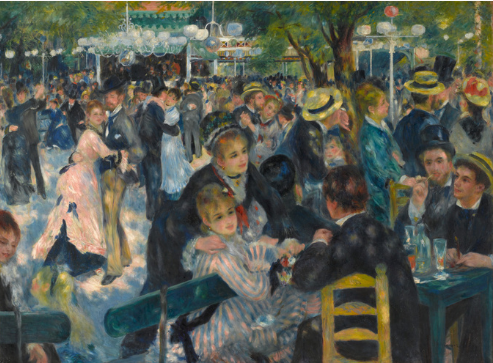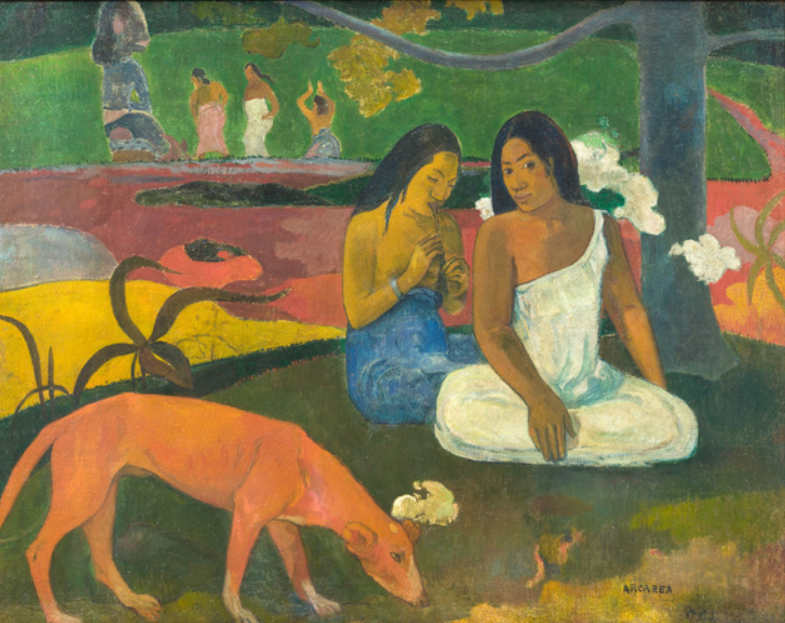1. Petite danseuse de quatorze ans

Artist: Edgar Degas
Date: 1881
Edgar Degas's "Petite Danseuse de Quatorze Ans" emerges as an iconic symbol of artistic innovation and controversy. Created in 1881, this sculpture breaks away from the typical idealized portrayals, offering an authentic and true-to-life representation of a young ballet dancer. Degas employed unconventional materials like wax and real hair, challenging the norms of traditional sculpture. Initially controversial for its departure from conventional beauty standards, the sculpture sparked debates on realistic representation in art. Despite its initial controversy, it remains a pioneering work in modern sculpture, providing an unfiltered glimpse into the world of ballet and the reality of a young dancer's life.
2. Bal du Moulin de la Galette

Artist: Pierre-Auguste Renoir
Date: 1876
Renoir's "Bal du Moulin de la Galette" painted in 1876, captures the vibrant atmosphere of a Sunday afternoon in Montmartre, Paris. This masterpiece portrays a bustling gathering of dancers, socialites, and locals at the popular dance spot. Through skillful brushwork, Renoir brings the scene to life, depicting animated movements, laughter, and a sense of conviviality. His adept use of Impressionist techniques, and focus on fleeting moments, elevates the artwork beyond mere representation, imparting a profound sense of vitality and motion. "Bal du Moulin de la Galette" stands as a vivid snapshot of Parisian life, capturing the essence of a moment frozen in lively artistic brilliance.
3. Self Portrait

Artist:Vincent Van Gogh
Date: 1889
Vincent Van Gogh created over 40 self-portraits within a span of ten years. This particular self-portrait was completed in 1889 during his turbulent period in Saint-Remy. Many art historians consider this painting to potentially be among his final self-portraits before departing southern France. Notably different from his usual attire, Van Gogh is depicted wearing a suit jacket instead of his customary pea jacket. The deliberate use of light blue as a backdrop sharply contrasts with the fiery red tones dominating his hair and beard. Through the application of swirling brushstrokes and the bold deployment of vibrant colors, Van Gogh adeptly translated his inner emotional turbulence onto the canvas, presenting a compelling self-image fraught with tumult and intensity.
4. Card Players

Artist: Paul Cezanne
Date: 1890~1895
"The Card Players" stands as a series of oil paintings by the French Post-Impressionist artist Paul Cézanne. Among these works, the version showcased at the Musée d'Orsay holds particular significance, illustrating the remarkable culmination of the artist's innovative research and experimental techniques. Diverging from the dramatic narratives prevalent in preceding artworks of the genre, Cézanne's portraits are distinguished by their absence of dramatic elements, storytelling, and traditional character depictions. Instead, his focus lies in the analysis and representation of genuine forms through simplification, a hallmark of the Post-Impressionist movement. Notably, one of the versions from "The Card Players" series was sold in 2011 to the royal family of Qatar for an estimated price of $250 million (equivalent to $301.1 million today). This transaction established a new pinnacle for the highest price ever paid for a painting, a record that remained unbroken until November 2017.
5. Arearea

Artist: Paul Gauguin
Date: 1892
Gauguin's "Arearea" painted in 1892 during his stay in Tahiti, embodies the essence of his immersion in Polynesian culture. Recognized as a post-impressionist artist, Gauguin gained widespread acclaim posthumously despite enduring financial struggles during his lifetime. This masterpiece portrays Tahitian women amidst lush tropical surroundings. Gauguin's departure from traditional European artistic norms is evident in the bold use of vibrant colors and simplified forms. He aimed to convey the emotional and spiritual depth of Tahitian life, prioritizing this over mere realism. Gauguin's portrayal of Tahitian culture and its landscape stands as a testament to his artistic prowess and enduring fascination with the paradisiacal allure of Tahiti.
